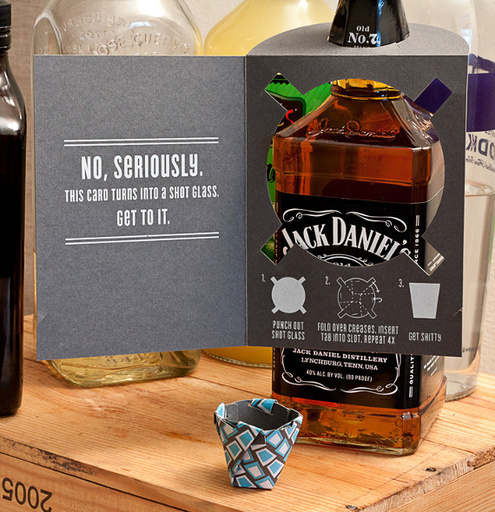
Birthday card design examples
Our most recent collection of Birthday card examples.
We curate topical collections around design to inspire you in the design process.
This constantly-updated list featuring what find on the always-fresh Muzli inventory.
Last update: 1/12/2026


Kid's birthday invitation card by Florent Renard
One of my kids ask me to make his invitation card for his birthday. The brief was : "I WANT A SPINOSAURUS YELLING INVITATION IN FIRE WITH A VOLCANO!!! “ He's the greatest AD I ever had ♥
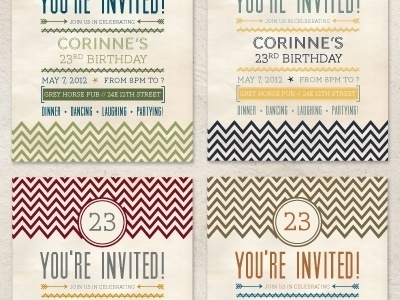
Dribbble - Invitation Postcards by Teela Cunningham #card #birthday

Birthday Card | Flickr - Photo Sharing! #doodle #white #black #illustration #jay #byrnes #art #and
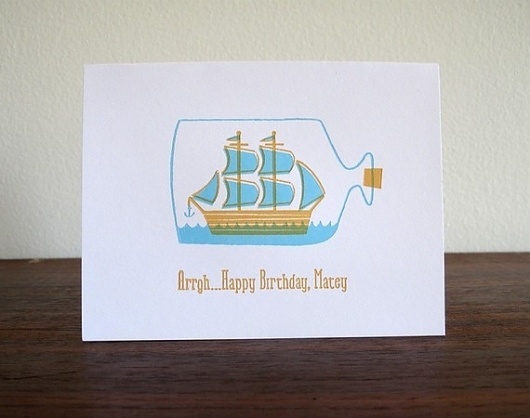
Ship in a Bottle Letterpress Birthday Card by luludee on Etsy #orange #letterpress #illustration #ship #blue
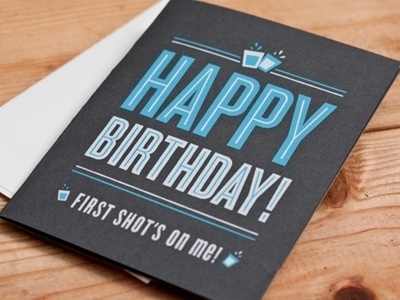
Dribbble - The Shotglass Card by 55 Hi's #card #print #screenprint #birthday #type
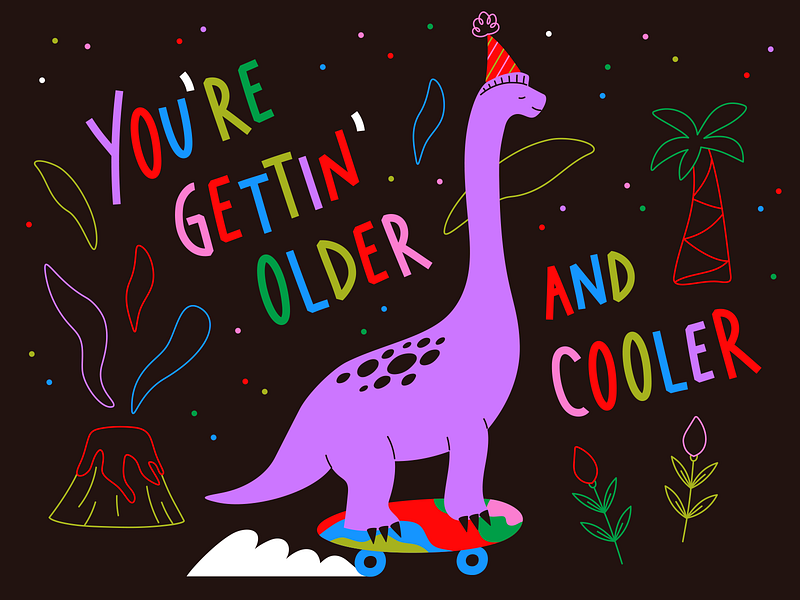
Kudoboard | Birthday greeting card

Birthday card

30+ Great Happy Birthday Wishes with Images for Free Download
Your relative, friend, or colleague’s birthday is coming soon, and you haven’t chosen the right birthday card yet? We bring you the best selection of 30+ unique free happy birthday wishes with images! Give happiness, pleasant moments, and joy to your loved ones, even if you are very far away. You can download any image […] The post 30+ Great Happy Birthday Wishes with Images for Free Download appeared first on Designer Daily: graphic and web design blog.

Best Scented Candle Cards to Leave a Lasting Impression
Candles are one of the oldest ways man has brought light and warmth into the world, and while electricity and bulbs now fulfill that function, candles still have meaning beyond providing illumination. They have become almost symbolic, representing ideas, hopes, and emotions, or they come with scents and designs that tickle the senses or soothe the soul. Candles have become the perfect medium to convey feelings and create memories, and this simple yet innovative design combines an extra-thin aromatic candle with an equally thin multi-purpose packaging that lets you send a more personal and more memorable message that delights the senses and warms the heart as the candle flame dances and spreads a soothing fragrance throughout your room. Designer: LURA Design Studio Click Here to Buy Now: $17 $19 (10% off at checkout). Hurry! Black Friday deals end in 48 hours. The Problem: Forgettable, Distant Messages E-mail and instant messaging have made the world a smaller place, allowing us to immediately reach people half a world away in the blink of an eye. While that does open up new channels of communication, it has also made messaging feel less personal and, ironically, more distant. It’s almost too easy to just pick an emoji, sticker, or animated GIF to convey a message, almost like simply cutting out a random picture from a magazine and sending it to your friend as a birthday card. It technically works, but not in a way that you’d remember for years to come. There will always be a need to have more meaningful and memorable connections, and sometimes doing it the old-school physical way has more impact. You could always write a personal message on a card by hand, by why not go the extra mile and send something that really conveys your intentions not just through words but also through the sights and smells of a fragrant candle? That’s the complete package that this unique candle and card combination offers to make sending personalized messages not only more effective but also faster and more affordable as well. Why this is the Best Scented Candle for Cards Scented candles aren’t new, but few of them could be easily mailed using standard postage stamps. This aromatic candle and its packaging, however, are so thin that it be easily sent with a 94 Japanese Yen standard stamp, removing the hassles of sending packages and whatnot. Using the message card is simple as well. The sender writes their heart-warming message on the card and mails it, while the receiver takes out the thin candle, stands it on the indicated slot on the packaging, lights up the candle, and enjoys its fragrance as they read the message and watch the little flame dance. You might have reservations about lighting a candle that’s standing on paper packaging, but this aromatic candle card is specially designed to protect you while you bask in the emotive experience. The packaging is made from fire-retardant paper, so it will only turn black without flaming up when burned. The candle itself also has a natural extinguishing design where it only burns halfway through, around 30 minutes, before it dies out. All you have to do is light up the candle and sit back as you enjoy the sensations that it brings. Who This Scented Candle Card is For Candles have a naturally enchanting aura about them, with the flickering flame causing you to sometimes zone out in deep thought. Candles have also traditionally been used to honor loved ones, whether on birthday cakes or on memorial sites. The emotions that the sight of a lighted candle can be as varied as the messages sent with it. Pair that with soothing aromas, and you’ve got the perfect blend for a memorable sensory experience. Sakura (Pink): The delicate and elegant scent of cherry blossoms, capturing the essence of springtime in Japan, adds warmth and beauty to any space. Green Tea (Green): A soothing blend of sweetness and bitterness, evoking calm and relaxation, making your “Thank You” even more meaningful. Yuzu (Yellow): A refreshing and slightly bitter citrus aroma that invigorates the senses, perfect for brightening someone’s day. With such a visual and olfactory treat, this aromatic candle message card makes for the perfect gift if you want to quickly send a heartfelt message that no app or email can adequately convey. Its compact packaging and safety features make it convenient to simply mail a package to your loved one without worrying too much about costs and logistics. Step away from the chaotic and impersonal world of instant messaging once in a while and create a deeper and longer-lasting connection with this beautiful Scented Candle Card. Click Here to Buy Now: $17 $19 (10% off at checkout). Hurry! Black Friday deals end in 48 hours.The post Best Scented Candle Cards to Leave a Lasting Impression first appeared on Yanko Design.

Dribbble Invitation Postcards
Dribbble Invitation Postcards by Teela Cunningham card birthday
Industrial Design: Geco Hub is a Smart and Stylish Storage System
Industrial Design: Geco Hub is a Smart and Stylish Storage System abduzeedo06.11.20 Have you ever experienced that last minute panic when you’re trying to leave the house and can’t find your phone/wallet/keys? Or not been able to find the TV remote or your reading glasses? Or perhaps forgotten to post a birthday card or letter that was waiting by the door? Geco Hub is just the place for these items and more. It’s wall-mounted storage for the things you can’t afford to lose or forget, somewhere you can keep the often-needed stuff visible and easily accessible so it’s always there whenever and wherever you need it. All you have to do to store something in Geco Hub is push it in. What’s more, Geco Hub is seamlessly modular, as you can tile multiple units together to create one giant storage space. You can even mix and match colours between units to create your own piece of ever-changing wall art. Industrial Design It’s more compact than shelves and cabinets, so it can fit in small spaces around the home where other storage can’t. It can be installed in minutes without any screws too. Geco Hub was recently 600% funded on Kickstarter and is currently available to preorder at a discount for a limited time here.
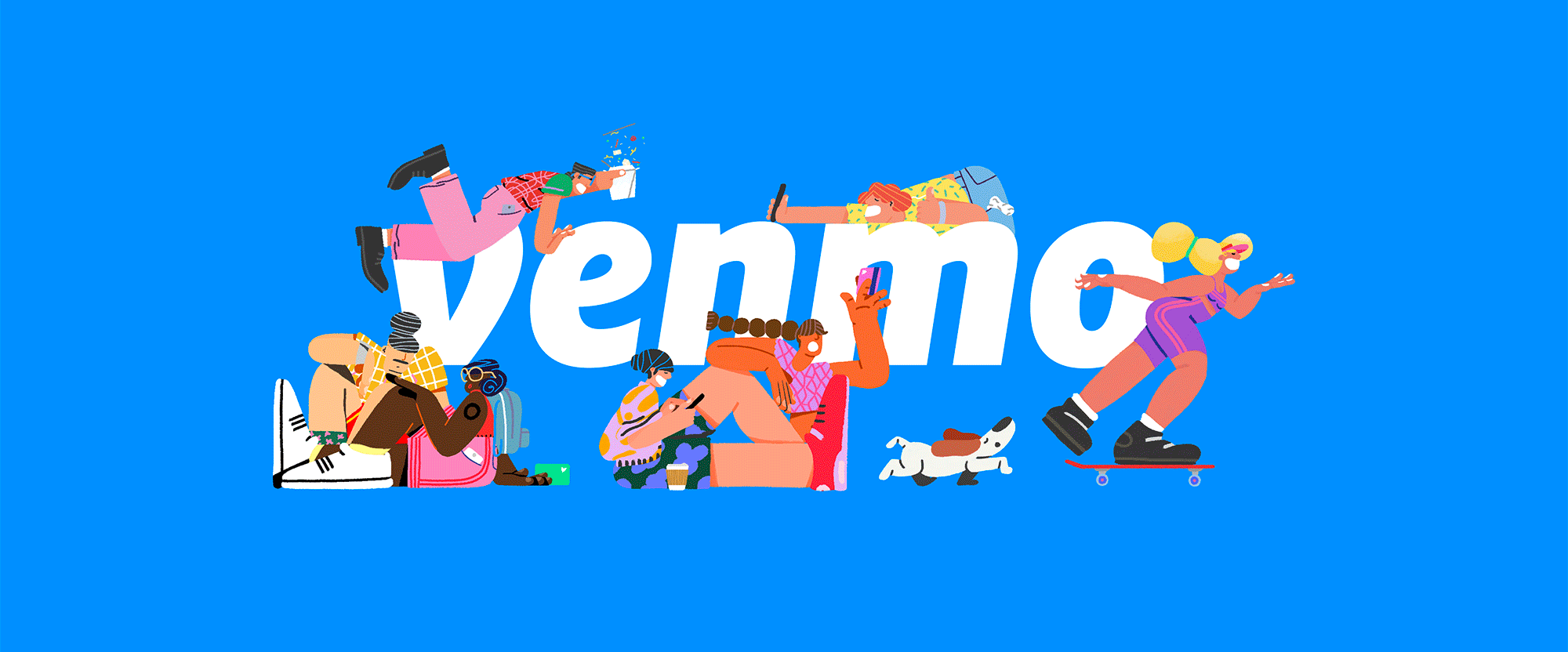
Reviewed: New Identity for Venmo by Koto
“Mo’ Money” Established in 2009, Venmo is a mobile payment service that allows people to quickly send each other money through their app. Unlike PayPal (although owned by PayPal since 2013) where there are multiple clicks and screens required to send money to a friend, the Venmo app makes this process relatively easier and quicker (at least once you have located your friends -- the few times I have used it, finding people, the right people, was confusing and uncertain). Transactions are free as long as the money is coming from a linked bank account, with money being made by PayPal from credit card transactions and from select merchants who accept Venmo as payment. In 2018, when Venmo's popularity began to rise, it processed $12 billion in volume in the first quarter alone. Apart from the ease of use, what makes Venmo interesting is that its home screen is a feed of other users transactions so you can see either complete strangers' or your friends' payment activity -- no specific amounts just who they paid and for what -- which, call me old fashioned, but the first time I realized that my transaction subjects were public it felt very invasive. You can opt out of making your transactions public, yet this is what makes Venmo, Venmo... officially a "social payments app". Starting with their social media, Venmo is rolling out a new identity designed by Koto. The new electric blue retains the heritage of the original Venmo blue. It's been tweaked to work harder and more consistently across all applications, on screen and off. A broader palette of complementary colours now sits alongside it. With its flexibility to be either bold or controlled, Athletics is the perfect typeface for Venmo, more than matching the energy of the rest of the brand. Scto Grotesk is a more functional secondary partner that still holds its own.Koto project page Logo, before and after. No, your eyes do not deceive you, there is nothing different about the logo, which remains exactly the same. The only difference is the tone of blue, which seems frivolous but, at least as a sample audience of one person, the first time I ever used Venmo, the shade of blue gave me pause in whether I would trust the service or not -- it felt like a cheap color for an app from the mid 2000s. It didn't seem right. The new blue is obviously on trend but it now fits within the vibrant Instagram/Facebook/WhatsApp shades. In terms of the logo, it's a nice wordmark with a distinctive curly-esque "v". Examples of OLD identity. I have never seen any ads from Venmo so the above image is news to me and it does look direly boring. Created in collaboration with Sebastian Curi, the new set of illustrations bring to life all the many experiences behind Venmo payments, from road trips to ramen.Koto project page Your browser does not support the video tag. Illustrations, from sketches to finished drawings. Since day one, Venmo's users have made it what it is. That's why we've evolved the brand to celebrate the story behind a payment. Dinner tabs. A dollar to say hi. Last-minute concert tickets. The $6.8M spend on 🍕 last year alone. It's an identity that reflects the real-life experiences users share - from the everyday to the totally random.Koto project page Your browser does not support the video tag. Your browser does not support the video tag. Sample illustrations. Color palette. App icon with illustrations. The new identity revolves around illustrations by Vancouver, Canada-based Sebastian Curi and, no doubt, they are pretty awesome, fun, vibrant, and exciting. You can see many more samples on his Behance project page. I do wonder, however, how sustainable this is beyond a couple of years? It looks like there is a wide library of illustrations but for how long and for how many messages can they be used? Maybe the answer is that it doesn't matter and this is indeed part of a 2- or 3-year plan as Venmo escalates into its next stage and will then be able to shed this for whatever makes sense in the future. Right now, though, the message is: This is fun, jump in, ask questions later. Already a key part of the product experience, we've rendered the Venmo payment feed as a graphic framework. This allows us to represent the app experience - and all the daily payments - in fresh and interesting ways.Koto project page Your browser does not support the video tag. Translating the feed into a visual language for ads and other applications. Sample ads. The main application, if I am understanding this correctly from the samples above, is that ads will highlight either one transaction or multiple transactions, paired with relevant illustrations and then you are supposed to understand what Venmo does. Even though I already understand what Venmo does, the three examples above confuse me. It's hard to tell if they are sample UI screens, actual ads, or just random stuff put inside a 1920 × 1080 canvas. I mean, they are fun to look at and I like the typography but I have no idea what exactly is going on. Your browser does not support the video tag. Sample of the feed on the left, sample of not sure what on the right. Your browser does not support the video tag. Socks on the left, Venmo card animation on the right. Banner ad campaign. Your browser does not support the video tag. Your browser does not support the video tag. Social media posts. Even the banner ads and social media posts which are a little more restrained in amount of elements are sort of ambiguous about the messaging, placing maybe too much emphasis on the weird ways people describe their payments or even making it too much about the names seen in the ads. I dunno, maybe I'm getting old -- today's my 42nd birthday actually, so that's probably not it, LOL -- or maybe I am expecting more straightforward messaging to appease the relative awkwardness of the app and its social component. In any case, this all makes Venmo look fun, accessible, and relevant for a younger generation with less hang-ups than me.
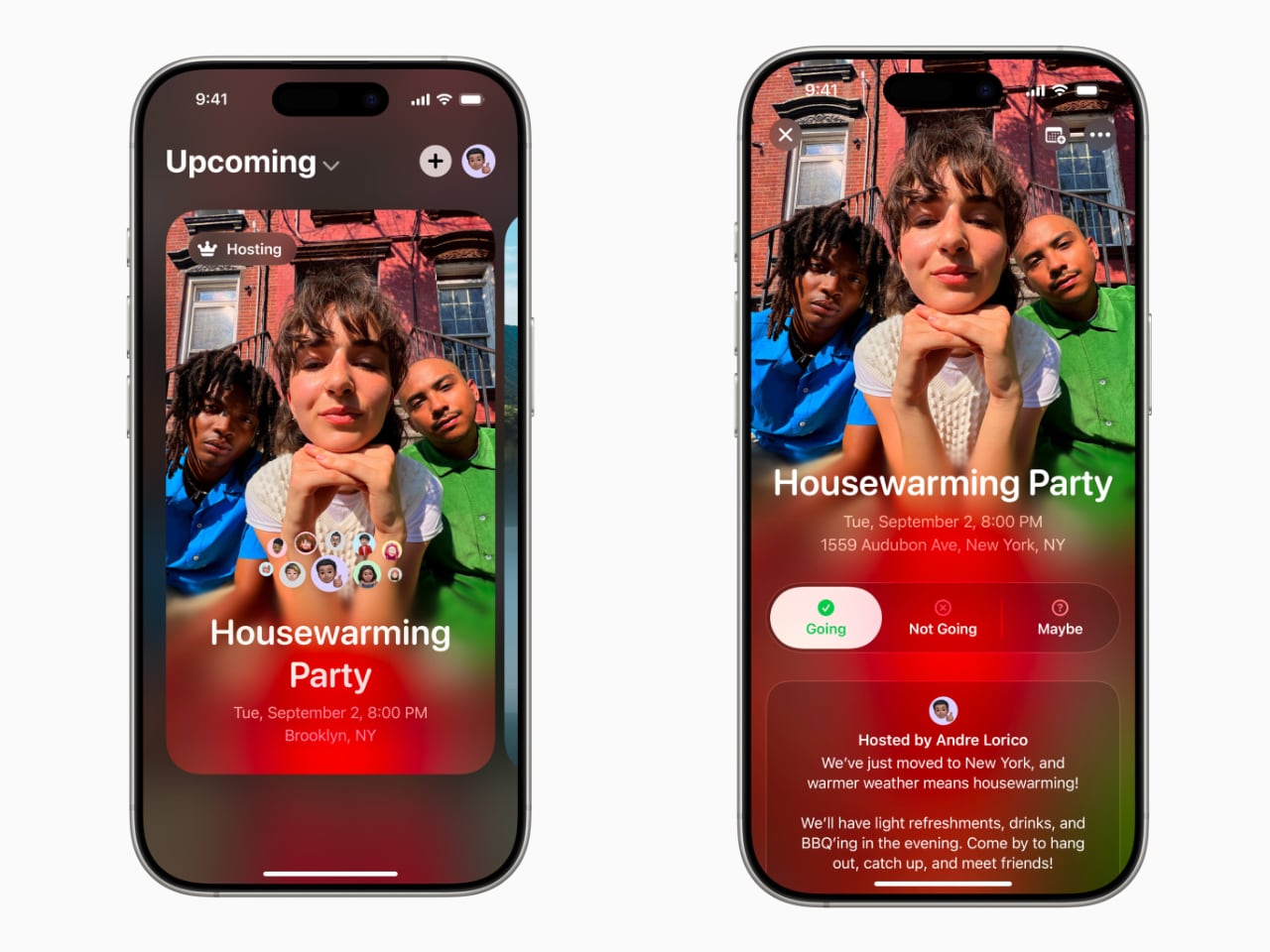
You’re Invited: Apple Makes Event Planning Effortless
Apple’s new Invites app makes event planning effortless, turning digital invitations into something more meaningful than a calendar reminder. Whether it’s a birthday, a housewarming, or an impromptu dinner party, the app simplifies the process, letting users craft invitations with personalized images, share event details seamlessly, and even set the tone with collaborative Apple Music playlists. Designer: Apple At its core, Apple Invites is an extension of iCloud, and it expands beyond a simple utility. The app lets users select images from their photo library or a curated gallery of backgrounds, incorporating location details through Maps and Weather integrations. This means guests know when and where to show up, but also what kind of weather to expect. iCloud+ subscribers can create invitations, while anyone—regardless of whether they use Apple devices—can RSVP, ensuring broader accessibility. Apple Invites Beyond event planning, Apple Invites enhances the experience by allowing attendees to contribute to a shared digital memory. Each invite includes a Shared Album where guests can upload photos and videos, creating a dynamic archive that captures the event as it unfolds. Apple Music integration takes it further by allowing guests to contribute to event-specific playlists, ensuring the atmosphere is as curated as the guest list. Hosts can even preview their invitations with real-time editing features, adjusting visuals, text, and event details before sending them out. Apple Invites Apple Intelligence makes creating invitations feel effortless and personal. With the Image Playground feature, users can generate unique visuals by describing their ideas, choosing themes, and selecting styles that reflect the event’s atmosphere. This tool ensures that invitations look as polished as they feel meaningful. Apple Invites In addition to visuals, Apple’s Writing Tools help refine invitation wording, offering suggestions that suit the occasion. For those who need inspiration, the AI assistant can recommend event titles and descriptions based on past invitations and trending themes, making the process feel more natural and less like filling out a form. Design and User Interface Apple Invites is designed with a visual-first approach, allowing users to create engaging invitations with minimal effort. The app’s interface follows Apple’s signature design principles, focusing on clarity, ease of navigation, and seamless integration with the broader Apple ecosystem. Apple Invites The home screen presents a streamlined dashboard with upcoming events displayed in a card-style format, offering an at-a-glance view of details like event name, date, location, and guest list. The typography is clean and modern, ensuring legibility, while dynamic transitions add a layer of fluidity to interactions. Customization is at the heart of the experience, allowing users to make each invitation uniquely theirs. With vibrant images, dynamic animations, and Apple Intelligence-generated designs, every invite is tailored to match the occasion, making it feel personal and visually engaging. The intuitive layout makes it easy to adjust event details, switch backgrounds, and preview invites before sharing them. Dark mode support provides a seamless visual experience in any lighting, while subtle motion effects add fluidity without becoming distracting. Interactive elements, such as tappable guest lists and real-time RSVP updates, make participation more engaging and intuitive. Managing Events with Precision Hosts can track RSVPs, control visibility settings, and even share invitations via link. They can choose which details appear in the event preview, from the background image to the event’s address. Guests aren’t locked into the Apple ecosystem—anyone can view and respond via the web. Privacy settings give attendees control over how their details appear and the ability to leave an event at any time. If necessary, hosts can report events for security concerns, preventing unauthorized users from accessing invitations. Apple Invites Apple Invites is part of iCloud+ and comes with additional premium features. Subscribers get expanded cloud storage to keep high-resolution event photos and videos accessible. Private Relay enhances browsing privacy by shielding online activity from network providers and advertisers. Hide My Email creates random email addresses for secure communication. HomeKit Secure Video provides encrypted home security monitoring. Custom email domains offer a personal touch for invitations, while Family Sharing lets up to five people access these benefits at no extra cost. Apple Invites refines digital invitations, making them more intuitive and connected. The app integrates smoothly into Apple’s ecosystem, streamlining event planning and enhancing how users organize, share, and experience gatherings. AI-powered personalization, privacy-focused guest management, and multimedia collaboration tools help set the stage for an event long before it begins and preserve memories well after it ends.The post You’re Invited: Apple Makes Event Planning Effortless first appeared on Yanko Design.
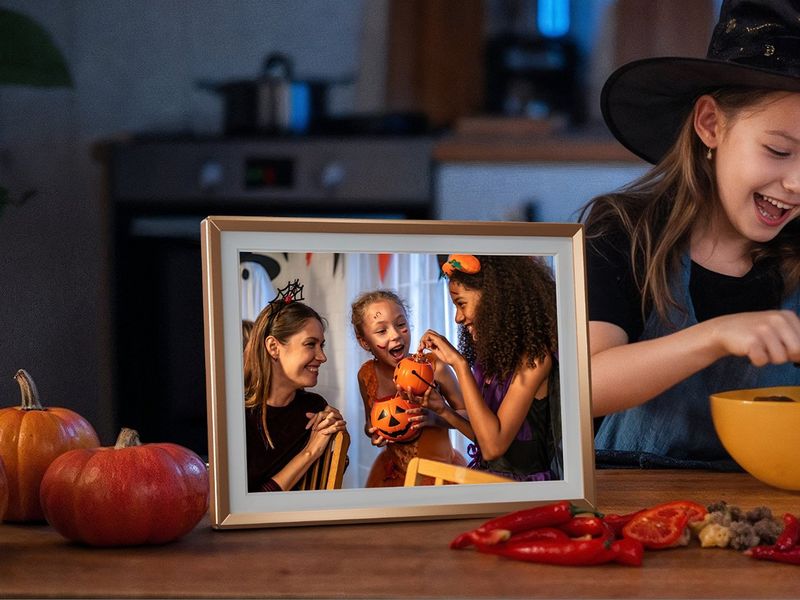
Black Friday: Arzopa D14 Photo Frame With Unlimited Family Sharing
Digital picture frames have struggled to find their place in homes that value both aesthetics and functionality. Most tilt too far toward obvious tech styling with glossy bezels and LED accents, or they compromise on display quality to hit budget price points. The market offers plenty of options that promise effortless memory sharing, but they typically deliver clunky apps, restrictive storage limits, and screens that look pale under natural light. The Arzopa D14 WiFi digital photo frame addresses these issues by balancing design restraint with genuine capability. The champagne gold finish reads as furniture rather than gadgetry, letting it sit naturally on console tables or nightstands without drawing unwanted attention. Its 14-inch display uses anti-glare glass that maintains clarity near windows or under direct lighting. The proportions feel considered, large enough to matter without overwhelming the surrounding space. Designer: Arzopa Team Click Here to Buy Now: $118.99 $219.99 ($101 off, use coupon code “D14YANKO”). Hurry, deal ends in 48-hours! Setup happens before the frame even arrives, which removes the usual friction. Photos can be preloaded, WiFi configured, and playlists organized through the Arzopa app ahead of time. Recipients plug it in and see their memories immediately, no pairing or downloads required. This becomes particularly valuable when gifting to parents or grandparents who find typical device setup frustrating or confusing. The Arzopa D14 WiFi digital photo frame plays videos up to two minutes long alongside standard photos, adding dimension that still images can’t provide. Birthday messages, vacation clips, and grandchildren recording quick hellos all fit comfortably. The Arzopa app works across iOS and Android, making uploads straightforward regardless of device. Unlimited cloud storage eliminates the usual anxiety about choosing which memories to keep, while 32GB of built-in storage ensures smooth offline playback. Family members anywhere can send photos that appear almost instantly on the frame. A daughter traveling uploads market scenes from Barcelona, and her parents see them within seconds. The like and gift features create simple interactions that feel natural rather than forced. Privacy controls keep exchanges within invited circles, while folders help organize memories by event, person, or timeline. The system adapts to however people want to use it. Night mode dims the display automatically as the room darkens, sparing everyone from that harsh glow that disrupts late-night routines. The weather widget and clock turn the Arzopa D14 picture frame into something more than just a photo display, adding small conveniences that make it feel useful throughout the day. The 1920×1200 resolution keeps images crisp across the full 14 inches, while the IPS panel holds color accuracy even when viewed from across the room. WiFi handles most file transfers smoothly, but the Arzopa D14 frame includes SD card support and direct Windows PC connections for situations where the Internet drops out or video files run large. It ships with everything needed, including the power adapter and wall mounting hardware. The weight distribution feels right, substantial enough to convey quality without making repositioning awkward when rearranging furniture or switching rooms. Founded in 2021, Arzopa has spent the past few years building a range of display products that prioritize practical functionality over flashy features. The company’s portfolio includes portable monitors and digital frames, all designed around the idea that screens should work smoothly without requiring technical expertise to operate. That focus shows in how the Arzopa D14 Digital Photo Frame handles the basics well before adding extra features. A quad-core processor keeps transitions between photos fluid, eliminating the stuttering that plagues cheaper frames. The touchscreen responds precisely to gestures, which matters for people who lose patience with laggy interfaces. That anti-glare coating makes a noticeable difference compared to standard glass. The Arzopa D14 photo frame handles common formats like JPG, PNG, MP4, and 3GP directly, so there’s no need to convert files before uploading them. With the holidays approaching, the Arzopa D14 digital photo frame makes a thoughtful tech gift that keeps delivering long after unwrapping, and this Black Friday deal offers the perfect opportunity to grab one or more. The frame occupies a useful middle ground between static picture frames and overcomplicated smart displays, showing memories clearly while looking appropriate on furniture people care about. Click Here to Buy Now: $118.99 $219.99 ($101 off, use coupon code “D14YANKO”). Hurry, deal ends in 48-hours!The post Black Friday: Arzopa D14 Photo Frame With Unlimited Family Sharing first appeared on Yanko Design.

LEGO of your 20’s
Birthday card i made for a friend who is turning 30.
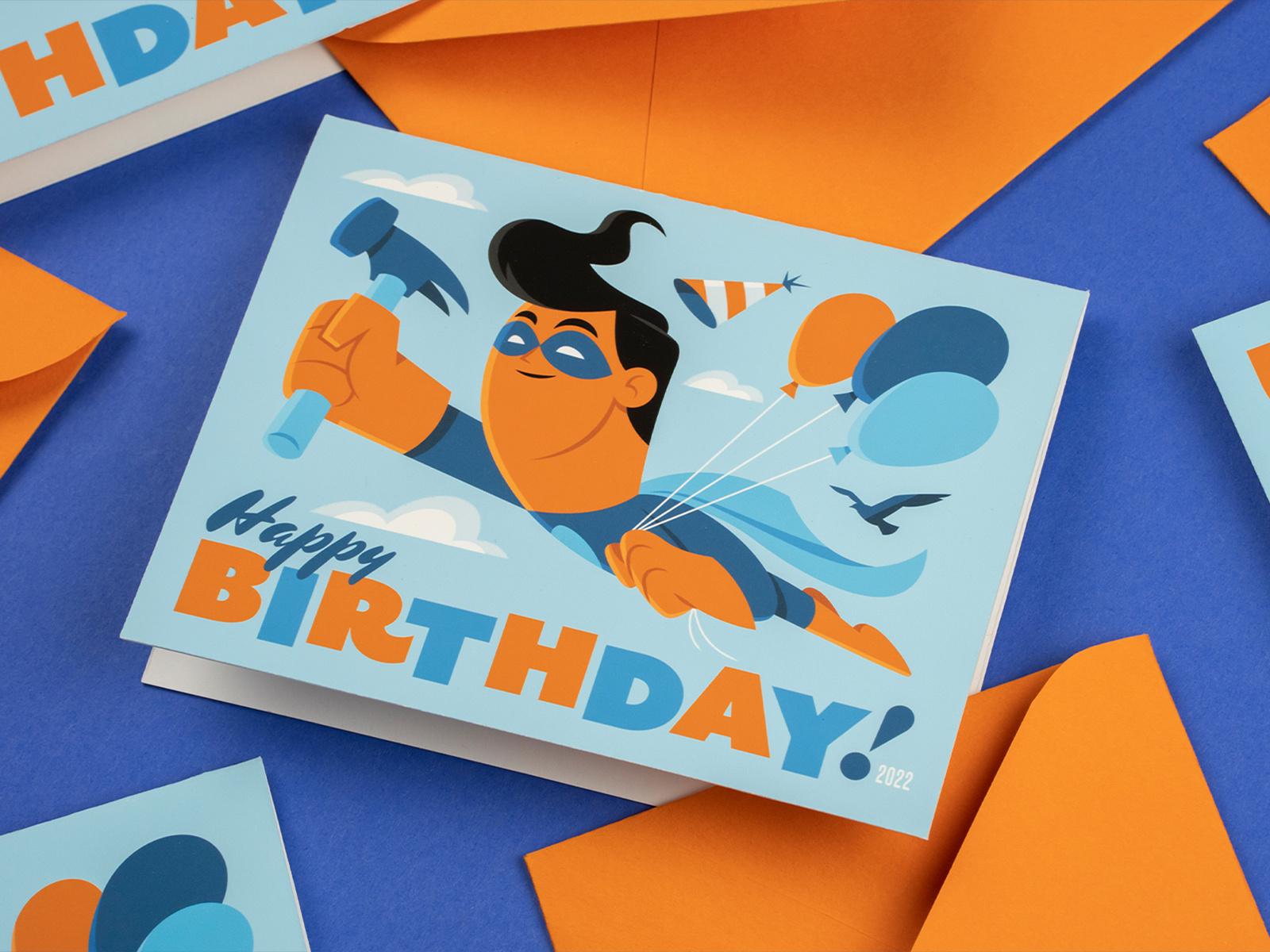
Dunn Lumber Birthday Cards
Birthday card design for Dunn Lumber's staff birthdays

To Mac From Jam
What do you make for your super cool designer wife on her birthday? A retro logo-book themed card full of affirming words, of course! Happy Birthday @Mackenzie Graves !! Had a ton of fun playing around with these abstract attribute icons. Such a fun style to draw in. Also, I found a vintage filing folder in the old supply closet at Fairhaven Church and cut it up to make the envelope, it looked so dope!

Retro Gadgets For Vintage Lovers: 5 Nostalgic Gifts That Actually Work In 2025
Nostalgia isn’t about living in the past—it’s about celebrating design moments when objects had soul, character, and tangible presence. For vintage lovers, the aesthetic pull of retro gadgets runs deeper than mere styling. These are people who appreciate the warmth of analog sound, the satisfaction of physical controls, and the beauty of mechanical precision. They understand that technology doesn’t need to be disposable to be functional, and that timeless design speaks a universal language across decades. This collection honors that perspective by bringing together five exceptional gadgets that bridge eras beautifully. Each piece captures authentic retro aesthetics while embracing modern conveniences that make them genuinely usable today. From cassette-inspired speakers to mechanized solar systems, these gifts prove that looking backward and moving forward aren’t mutually exclusive. They’re perfect for the person whose shelves mix vinyl with streaming devices, whose taste transcends trends, and who believes the best design is always worth reviving. 1. SYITREN R300 Portable CD Player The compact disc never truly left—it just waited for design to catch up. The SYITREN R300 recognizes this truth, delivering a portable CD player that feels simultaneously nostalgic and contemporary. Available in wood grain, classic white, or vibrant fruit green finishes, the R300 captures the clean-lined aesthetic of early audio equipment without feeling dated. The dynamic area button on the right side offers intuitive, tactile operation that satisfies in ways touchscreens never will. What elevates the R300 beyond pure nostalgia is its refusal to compromise on modern functionality. Bluetooth 5.3 connectivity means wireless freedom with contemporary headphones and speakers, while the traditional 3.5mm headphone jack and Toslink optical output accommodate wired purists and audiophile setups. The player handles standard CD, CD-R, and CD-RW formats plus digital files in MP3, WAV, and WMA. A 2000mAh battery delivers over six hours of playback, making it genuinely portable. Audio output thrust reaches 600mV with an 80dB signal-to-noise ratio, ensuring the listening experience matches the visual appeal. For vintage lovers who never abandoned their CD collections, this player acknowledges their format loyalty while meeting them where modern listening happens. What we like MUSE Design Gold Award-winning retro aesthetic available in wood, white, and fruit green finishes. Bluetooth 5.3 provides wireless connectivity to modern headphones and speakers. Multiple output options, including 3.5mm jack and Toslink optical for audiophile setups. 2000mAh battery delivers over six hours of portable playback. What we dislike CD-only format limits functionality compared to multi-format vintage players. Portable design may lack the substantial build quality of classic stationary models. 2. Side A Cassette Speaker Mixtapes represented something more than music—they were tangible artifacts of care, time, and curation. The Side A Cassette Speaker resurrects that emotional resonance through faithful aesthetic mimicry wrapped around thoroughly modern technology. Shaped precisely like a cassette tape, complete with a transparent shell and a side A label, this pocket-sized speaker does not attempt to hide its inspiration. The clear case doubles as a stand, transforming it from a portable audio device into a proper desk sculpture. For vintage lovers who remember making mixtapes or wish they’d experienced that era, this speaker bridges the gap between memory and modernity with charm and authenticity. The Side A succeeds because it respects both form and function equally. Bluetooth 5.3 connectivity ensures seamless pairing with phones, tablets, and laptops for wireless listening that analog tapes could never provide. MicroSD card support means offline playback without streaming dependencies, recapturing some of that physical media permanence. The sound profile leans deliberately warm and cozy, tuned to evoke tape playback character rather than clinical digital reproduction. At under fifty dollars, it delivers nostalgic design and functional audio in a package small enough to travel everywhere. This isn’t a gimmick trading entirely on looks—it’s a genuinely useful speaker that happens to look fantastic doing its job. Click Here to Buy Now: $45.00 What we like Authentic cassette tape styling with a transparent shell and a side A label captures mixtape nostalgia perfectly. Bluetooth 5.3 ensures reliable wireless connectivity with modern devices. MicroSD card support enables offline playback without internet dependency. Warm analog-inspired sound profile distinguishes it from typical digital speakers. What we dislike Compact size naturally limits bass response and overall volume compared to larger speakers. Cassette aesthetic may feel too niche for spaces requiring neutral design. 3. RetroWave 7-in-1 Radio Vintage aesthetics meet survival preparedness in the RetroWave, a multi-function radio that refuses to be just one thing. Wrapped in retro Japanese design language, complete with a tactile tuning dial, it immediately signals its nostalgic intentions. That exterior houses seven distinct functions: AM/FM/shortwave radio, Bluetooth speaker, MP3 player, flashlight, clock, power bank, and SOS alarm. This comprehensive capability set makes it equally appropriate for daily desk use, camping adventures, or emergency kits. For vintage lovers who appreciate both form and practical preparedness, the RetroWave delivers aesthetic satisfaction with genuine utility layered underneath. The brilliance lies in making preparedness beautiful. Solar panel and hand-crank charging mean the RetroWave stays operational when power grids fail, while USB and microSD playback provide offline music access. The radio functionality spans AM, FM, and shortwave bands, offering connection to broadcasts when internet streaming isn’t available. Bluetooth streaming accommodates modern listening habits during normal circumstances. The flashlight and SOS siren transform it from an entertainment device into safety equipment. This convergence of retro design and emergency readiness creates a gift that vintage lovers can display proudly while knowing it serves serious backup purposes. It’s nostalgia that works, beauty that prepares, and design that respects both past aesthetics and future uncertainty. Click Here to Buy Now: $89.00 What we like Seven functions in one device, including radio, speaker, flashlight, power bank, and SOS alarm. Solar panel and hand-crank charging ensure operation during power outages. AM/FM/shortwave radio provides broadcast access without internet dependency. Retro Japanese design with tactile tuning dial satisfies vintage aesthetic preferences. What we dislike Multi-function design may compromise individual feature quality compared to dedicated devices. Emergency-focused features add bulk that might exceed typical portable speaker expectations. 4. Perpetual Orrery Kinetic Art Some vintage inspiration reaches back centuries rather than decades. The Perpetual Orrery draws from 18th-century European Grand Orrery tradition, recreating solar system mechanics through intricate clockwork mechanisms. Planets orbit the sun, the moon cycles through phases, and even the Tempel-Tuttle comet follows its elliptical path—all driven by the same precision engineering found in sophisticated mechanical watches. This isn’t a static model but kinetic art that moves in real time, capturing celestial mechanics in miniature. For vintage lovers who appreciate mechanical complexity and astronomical beauty, the Orrery represents the ultimate intersection of science, history, and craft. What makes this gift exceptional is its timeless appeal. While most retro gadgets reference the mid-20th century, the Orrery looks back to pre-industrial scientific instruments when astronomy required mechanical ingenuity rather than digital computation. The continuous motion provides meditative visual interest—planets slowly circling, gears turning, the whole system moving in silent harmony. As desk or shelf decoration, it commands attention without demanding it, offering something genuinely mesmerizing to watch during thinking breaks. For the vintage lover who has everything modern nostalgia offers, the Orrery goes deeper, connecting to an era when understanding the heavens required building beautiful machines to mirror their movements. It’s educational, decorative, and hypnotic in equal measure. Click Here to Buy Now: $449.00 What we like 18th-century Grand Orrery-inspired design connects to pre-industrial scientific instrument tradition. Intricate clockwork mechanisms mirror sophisticated mechanical watch engineering. Continuous kinetic motion, including planetary orbits and lunar phases, provides meditative visual interest. Functions as both an educational model and a striking decorative art piece. What we dislike Mechanical complexity may require periodic maintenance or calibration over time. Premium mechanical construction results in a higher price point than decorative alternatives. 5. Portable CD Cover Player Album art deserves equal billing with the music it represents. The Portable CD Cover Player acknowledges this truth through clever design that displays the CD jacket while playing the disc inside. A convenient pocket holds the cover art front and center, creating an audiovisual experience that honors how albums were meant to be consumed—as complete artistic packages. The built-in speaker means genuine portability, taking your music and its visual identity anywhere. Wall-mountable design transforms it into a room decoration that actively plays rather than just displaying static art. For vintage lovers who understand that album covers represent significant graphic design history, this player finally gives physical media the presentation it deserves. The minimalist design philosophy lets the album art itself become the visual centerpiece. Clean lines and simple operation keep the focus on the music and imagery rather than the player’s own aesthetic. The built-in speaker and rechargeable battery provide authentic portability without requiring external amplification. This solves the eternal collector’s dilemma: beautiful album covers hidden in storage because there’s no good way to display them while playing. The Portable CD Cover Player makes your music collection into a rotating art gallery, celebrating the graphic design, photography, and typography that made physical music formats so visually rich. It’s nostalgia that understands albums were always multi-sensory experiences, and that separating audio from visual diminishes both. Click Here to Buy Now: $199.00 What we like Integrated pocket displays CD jacket art during playback, honoring a complete album experience. Built-in speaker and rechargeable battery enable genuine portability without external equipment. Wall-mountable design transforms music playback into active room decoration. Minimalist aesthetic lets album artwork become the visual focus. What we dislike Built-in speaker quality is likely compromised compared to dedicated audio systems. The wall mount bracket, sold separately, adds cost beyond the base player price. Gifting Timeless Design Vintage lovers aren’t stuck in the past—they’re selectively mining it for design wisdom the present often forgets. These five gadgets honor that philosophy by capturing retro aesthetics without sacrificing modern functionality. From CD players that embrace Bluetooth to mechanical orreries that predate electricity itself, each gift proves that timeless design transcends any single era. They’re conversation pieces that actually function, nostalgic objects that genuinely serve contemporary needs, and beautiful things that happen to be useful. The best retro gifts acknowledge why certain designs endure while making them accessible to how we actually live today. These gadgets don’t force you to abandon modern conveniences to appreciate vintage aesthetics. They bridge eras elegantly, letting vintage lovers enjoy the warmth of analog inspiration through contemporary functionality. Whether celebrating a birthday, marking an occasion, or simply recognizing someone’s refined taste, these gifts speak a language of quality, character, and enduring style that transcends temporary trends.The post Retro Gadgets For Vintage Lovers: 5 Nostalgic Gifts That Actually Work In 2025 first appeared on Yanko Design.
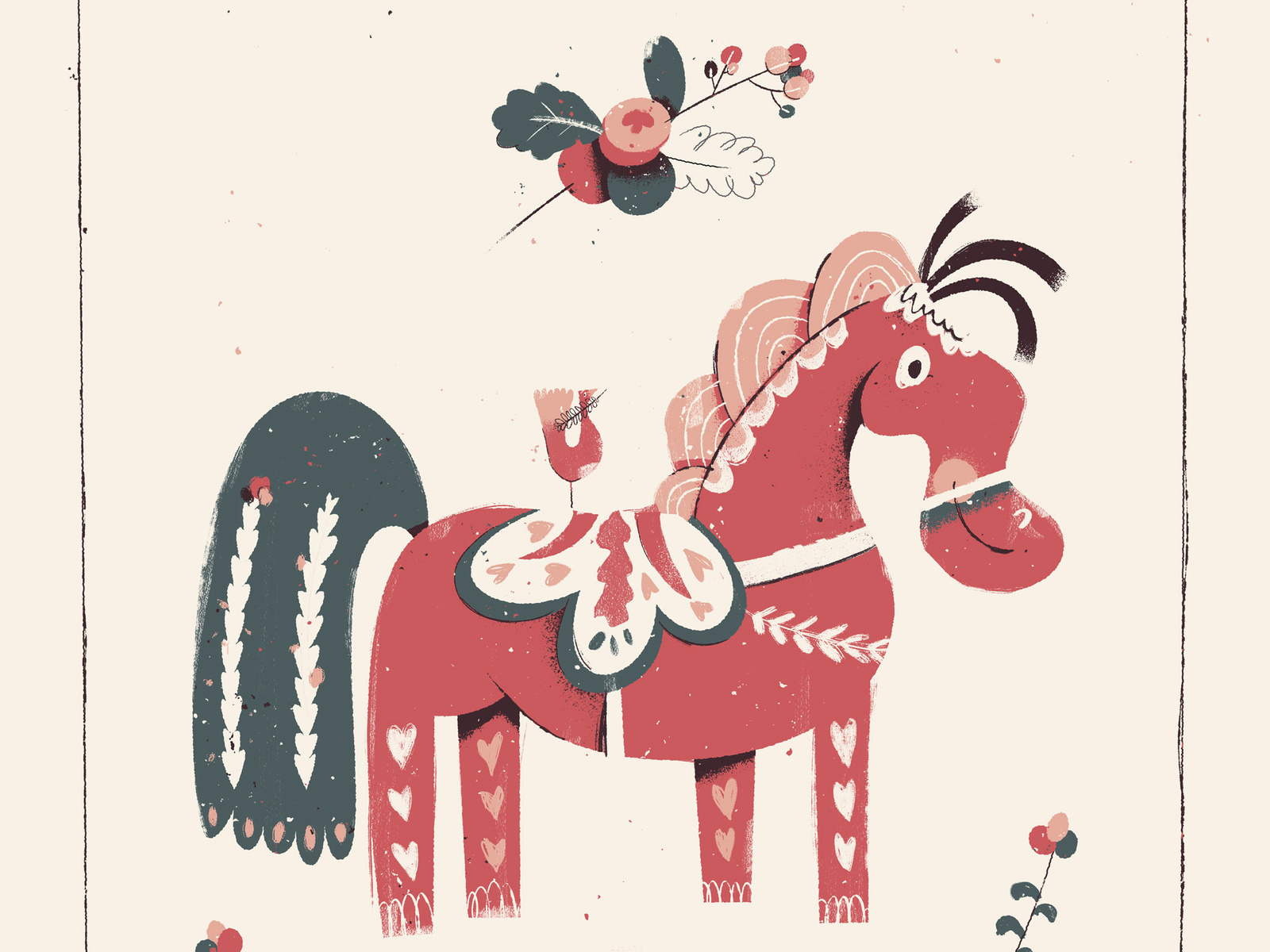
Dala Horse
Hi there I made a Swedish Dala horse for my mom since we're going to be taking her to Sweden for her birthday. I made a card announcing it with this illustration. The fun thing is we used to have these around the house when I was younger. They were my moms when she was a child since our ancestors are from Stockholm. Anyway this was fun to make and I mainly copied wooden versions I found on the internet and around the house.
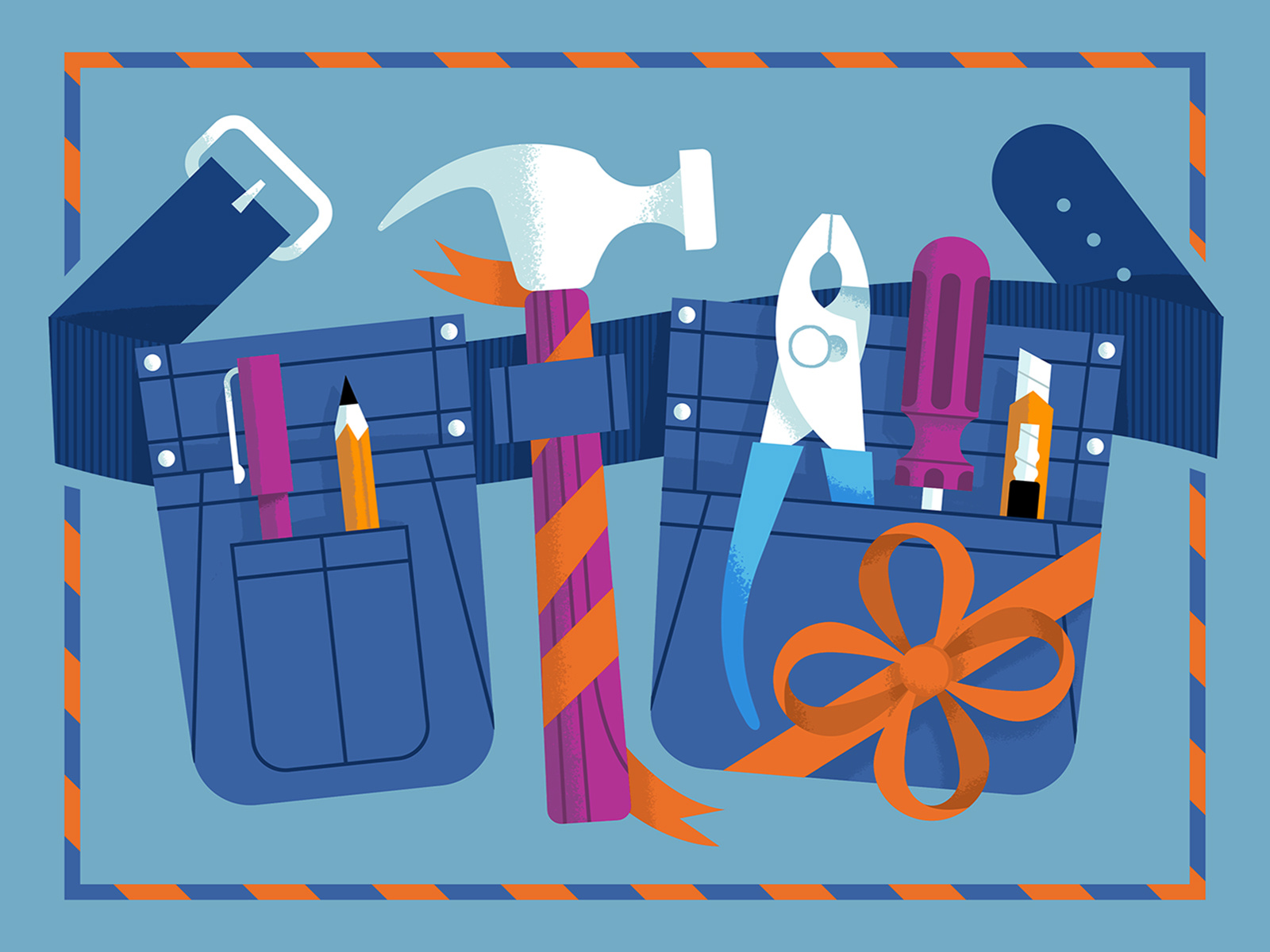
Dunn Lumber Birthday Cards
Birthday card design for Dunn Lumber's staff birthdays.
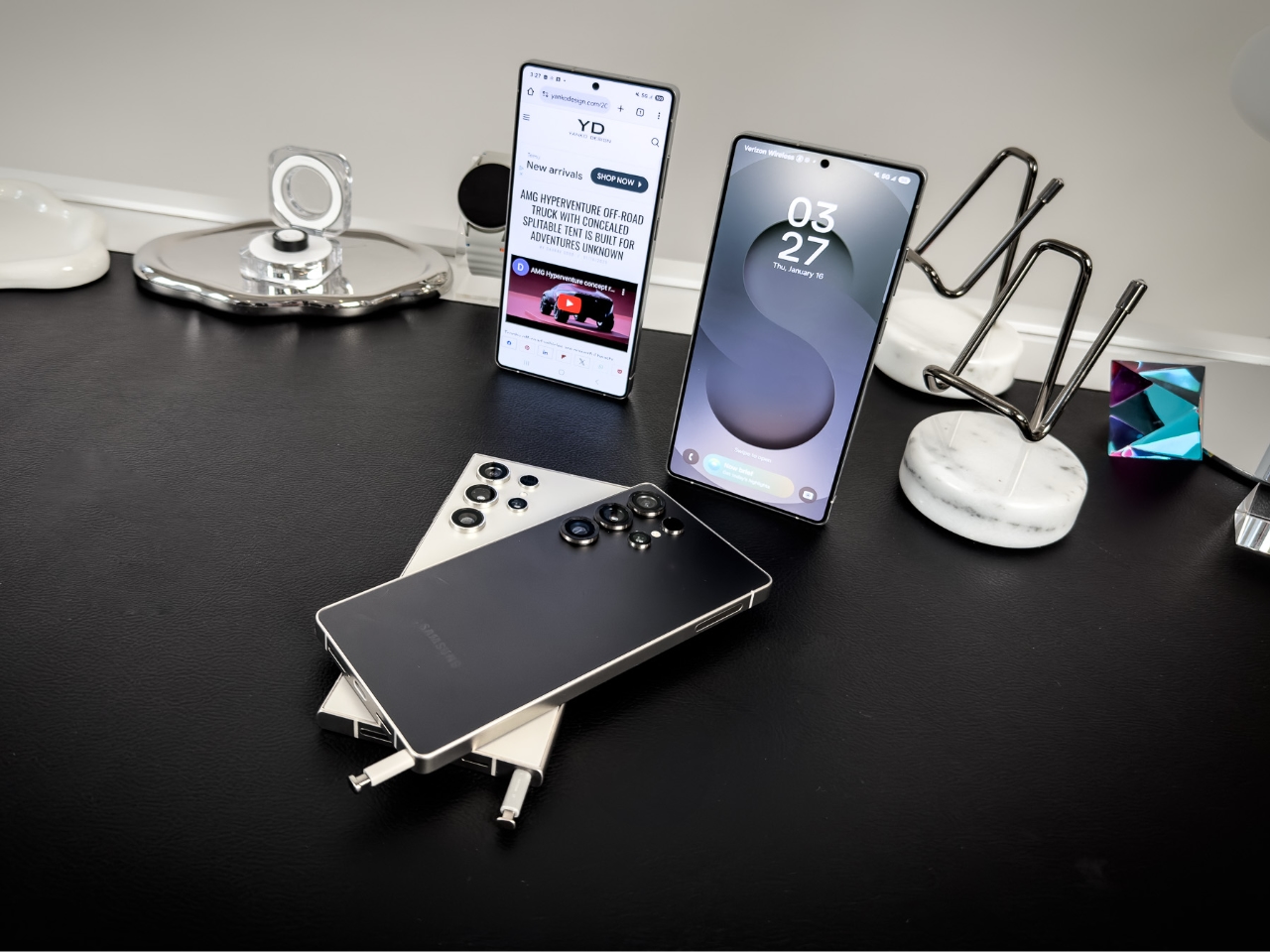
Samsung Galaxy S25 Series Launch: A Hands-On Look at the New Features and Design
Samsung’s Galaxy S25 series—the S25, S25+, and S25 Ultra—represents a thoughtful evolution in smartphone technology. It combines advanced AI integration, refined camera systems, and impressive performance capabilities. While it introduces meaningful upgrades, the series remains grounded in Samsung’s mission to deliver reliable, user-focused devices. Designer: Samsung Each model in the lineup has been designed with specific users in mind. The S25 caters to those who value compact and efficient devices, the S25+ strikes a balance with its larger display and battery, and the S25 Ultra targets tech enthusiasts with its cutting-edge features and premium build. After spending time with the lineup, it’s clear that Samsung is refining the formula to appeal to a wide spectrum of needs without straying from its established strengths. Design and Durability Samsung’s design refinement is on full display with the S25 series, showcasing slimmer edges, a lighter profile, and refined materials that make each device feel both premium and practical. “With the S25 Ultra, we’ve focused on a design that feels lighter and also improves grip and usability,” Charles Uptegrove, Samsung’s product manager, shared during the demo. “The titanium frame plays a huge role in achieving this balance—it’s lighter yet sturdier, giving users confidence in everyday handling.” Galaxy S25 Ultra The flatter edges enhance grip and lend a modern, streamlined aesthetic. Uptegrove also highlighted the subtle lift in the frame: “If you look closely, there’s a slight elevation around the edge, ensuring that the display never comes into direct contact with a surface when placed facedown. It’s a minor detail that offers major peace of mind.” This thoughtful addition minimizes the risk of scratches, especially for users who prefer to go caseless. Galaxy S25 Ultra The S25 and S25+ are equipped with Corning Gorilla Glass Victus 2 on both the front and back, providing excellent scratch resistance and durability. The S25 Ultra, on the other hand, steps up its toughness with enhanced Corning Gorilla Armor on the front and Corning Gorilla Glass Victus 2 on the back. Adding to this, the Ultra incorporates a titanium frame, ensuring a premium yet rugged build. Galaxy S25 Ultra “The titanium not only reduces weight but also adds to the overall feel of durability,” Uptegrove explained. At 218 grams, the Ultra strikes a balance between a solid, premium feel and comfort in hand. “It’s slimmer, lighter, and more ergonomic, thanks to the redefined edges and materials. These adjustments make the Ultra easier to use for extended periods without any fatigue,” he added. At the same time, the smaller size doesn’t compromise its usability, with the S25 offering a compact design that weighs only 162 grams. Galaxy S25 Ultra vs. Galaxy S24 Ultra The combination of premium materials and subtle ergonomic improvements showcases Samsung’s attention to detail. “We wanted to create a device that feels effortless to handle while still exuding that premium Samsung quality,” Uptegrove emphasized. For users seeking a balance between aesthetics and functionality, these design updates are sure to resonate. Display and Visual Excellence The display is where Samsung continues to shine. The Galaxy S25’s 6.2-inch FHD+ Dynamic AMOLED 2X screen offers vivid colors, excellent brightness levels, and a fluid 120Hz refresh rate, making it perfect for users who value smooth scrolling and lifelike visuals. The S25+ steps up with a larger 6.7-inch QHD+ display that enhances sharpness and delivers deeper contrast, ideal for watching movies or editing photos. Meanwhile, the S25 Ultra’s expansive 6.9-inch QHD+ screen offers an immersive viewing experience that is unrivaled in clarity and detail, ensuring even the smallest on-screen elements remain crisp. During hands-on time, I found the Ultra’s ProScaler feature particularly transformative. Borrowed from Samsung’s premium TV lineup, ProScaler intelligently upscales lower-quality content to QHD+ resolution in real-time. Even older videos or low-resolution social media images gain impressive sharpness, providing a visually satisfying experience regardless of the source content. Charles Uptegrove highlighted the real-world value of this feature: “Even if the original content is far from 4K, it will look vibrant and crisp on the Ultra’s QHD+ display.” This capability bridges the gap between source quality and display potential, enhancing every viewing experience. AI Features and Innovations Samsung’s integration of artificial intelligence across the Galaxy S25 series enhances everyday functionality to unprecedented levels. During the hands-on demo, Charles Uptegrove emphasized the thoughtfulness behind the Galaxy AI Platform and its seamless integration into One UI 7. “We’ve spent years ensuring that these features not only feel intuitive but actually make life easier for users,” he noted, setting the tone for a deep dive into the device’s AI capabilities. Samsung Galaxy AI Agent Now Brief Central to this is NowBrief, described by Uptegrove as a ‘curated AI’ that learns and adapts to the user’s daily routines. “It’s like having a personal assistant that knows exactly what you need,” he explained. For instance, NowBrief consolidates data from various apps to create a personalized dashboard. “You might wake up and see the weather, your energy score from your Galaxy Watch, reminders of friends’ birthdays, and even playlists for your commute—all in one place,” Uptegrove added. Demonstrating the drawing assist feature, he showcased how AI generates creative designs, such as a birthday card complete with a chocolate cake image, which can then be sent directly to contacts. Another highlight is AI Select, which transforms traditional Smart Select into a smarter, context-aware tool. “If you’re watching a video, it might suggest creating a GIF, summarizing the content, or translating subtitles,” Uptegrove explained. This feature consolidates over 30 tools, making complex tasks remarkably simple and accessible. The Circle of Search feature introduces multimodal search capabilities, allowing users to identify songs in videos or find specific photos using natural language commands. “Say something like, ‘Find pictures of wine bottles in Suwon,’ and the AI will filter through your gallery using tags and location data,” he demonstrated, illustrating the precision of this feature. Uptegrove emphasized how this functionality simplifies navigating vast photo libraries, making it easier for users to locate exactly what they need. Personalization is another area where AI shines. Uptegrove detailed how the Personal Data Engine securely learns user habits, suggesting actions like automating thermostat settings or enabling the blue light filter at night. “For example, if you use your TV as a sleep aid, the device can detect when you’ve fallen asleep via your Galaxy Watch and turn off the TV to improve your sleep quality,” he explained. This level of personalization extends to managing health metrics, such as sleep scores and energy levels, and integrating them into daily routines. One of the most innovative features is the audio eraser, which isolates and removes specific background sounds from videos. During the demo, Uptegrove showcased how AI can identify up to six sound types, including wind, crowd noise, and voice. “You can completely remove the wind or adjust the voice volume—all in real time,” he shared, underscoring the feature’s utility for content creators and everyday users alike. The Galaxy S25 Ultra also features generative editing, allowing users to seamlessly remove unwanted objects from photos. “If there’s someone in the background of your shot, the AI can identify and erase them, along with their shadow, with a single tap,” Uptegrove explained. These enhancements cater to photographers and casual users who want professional-grade results with minimal effort. Camera Systems and Photography Samsung’s camera systems in the S25 series deliver major enhancements across all three devices. The Galaxy S25 and S25+ share a solid camera setup: a 50MP wide sensor with optical image stabilization (OIS), a 12MP ultra-wide lens, and a 10MP telephoto lens offering 3x optical zoom. These cameras are perfect for everyday photography, delivering impressive results whether you’re shooting landscapes, portraits, or close-ups. Galaxy S25 Camera System: 200MP Ultra-Wide, 50MP Wide, 10MP and 50PM Telephoto The Galaxy S25 Ultra takes mobile photography to another level with a 200MP wide sensor that captures stunning levels of detail, even in challenging conditions. This is complemented by a 50MP 5x telephoto lens, which supports both 3x and 5x optical zoom, enabling users to achieve up to 100x Space Zoom. Imagine capturing intricate architectural details or wildlife from a distance with remarkable clarity. Additionally, the Ultra includes high-resolution macro photography capabilities, making it perfect for close-ups of small objects like flowers or jewelry. The Ultra’s virtual aperture stands out as a transformative feature. Charles Uptegrove aptly described it as “painting focus,” highlighting how it lets users fine-tune the depth of field to accentuate either the subject or the background for a professional-grade touch. This flexibility provides a DSLR-like bokeh effect, allowing photographers to craft their images with precision and creativity. This software-based tool allows users to adjust the depth of field and background blur for photos, mimicking the effects of a physical aperture in a DSLR. For example, while shooting portraits, the virtual aperture enables precise control over the bokeh effect, allowing the subject to stand out against a beautifully blurred background. During the demo, Charles Uptegrove explained, “It’s like giving users the ability to paint their focus—whether they want sharp details in the background or a dreamy, isolated subject.” This feature enhances creative flexibility and makes portrait mode feel more like a professional-grade camera. AI advancements like Samsung’s Pro Visual Engine further refine photography. The Ultra’s cognitive lens technology adjusts settings based on the scene, ensuring optimal brightness, contrast, and color balance. For group photos, the cognitive lens identifies individual faces and applies adjustments for each subject, delivering professional-quality results. In low-light conditions, the Ultra’s double-analysis noise reduction ensures clearer images and videos by analyzing every pixel and correcting artifacts in real time. Video capabilities also differ: the S25 and S25+ record in 4K at 60fps and 8K at 30fps, while the Ultra supports 4K recording at 120fps for smoother, more cinematic results. For professional photographers, the Ultra offers log video and advanced exposure controls, including zebra patterns and false color modes. These features cater to users who want precise post-production capabilities, enabling them to fine-tune color and lighting. Combined with the virtual aperture, these tools empower users to push creative boundaries, whether capturing stills or video. Performance Under the hood, all three models are powered by the Snapdragon 8 Elite chipset, which Charles Uptegrove described as a “tailored processor that ensures unparalleled efficiency and responsiveness.” This 3nm chipset boosts performance and optimizes AI-driven tasks like NowBrief and AI Select, seamlessly integrating advanced capabilities into daily use. a 3nm processor that sets a new benchmark for efficiency and power. With a 40% improvement in AI task efficiency, the chipset ensures that resource-heavy operations like multitasking, gaming, and media editing run smoothly. For gaming enthusiasts, Samsung has partnered with the Vulkan Engine to enhance real-time ray tracing capabilities, achieving an 18% improvement in frame rates while reducing GPU and CPU workloads by 23% and 10%, respectively. To support this leap in performance, Samsung has implemented a significantly upgraded cooling system. The vapor chamber, now 40% larger than its predecessor, works in tandem with a new thermal interface material (TIM) that eliminates air gaps around the chipset. This design efficiently dissipates heat, maintaining peak performance during intensive tasks such as gaming or 4K video rendering. Samsung’s ProScaler, borrowed from its premium TV lineup, further enhances the viewing experience by intelligently upscaling standard-definition content to QHD+ resolution in real time. Even older videos or low-resolution social media images gain impressive sharpness, providing a visually satisfying experience regardless of the source content. Charles Uptegrove highlighted the real-world value of this feature: “Even if the original content is far from 4K, it will look vibrant and crisp on the Ultra’s QHD+ display.” This capability bridges the gap between source quality and display potential, enhancing every viewing experience. The Samsung Galaxy S25 series delivers a compelling blend of innovative AI capabilities, enhanced camera systems, and premium design refinements. With features like NowBrief, ProScaler, and advanced photography tools, these devices set a new benchmark for what smartphones can achieve in 2025. Each model is thoughtfully crafted to meet the diverse needs of users, whether they prioritize compact functionality, immersive displays, or cutting-edge performance. Stay tuned for our upcoming unboxing experience and in-depth review, where we’ll dive deeper into the everyday usability, real-world performance, and unique details that make the Galaxy S25 series stand out.The post Samsung Galaxy S25 Series Launch: A Hands-On Look at the New Features and Design first appeared on Yanko Design.
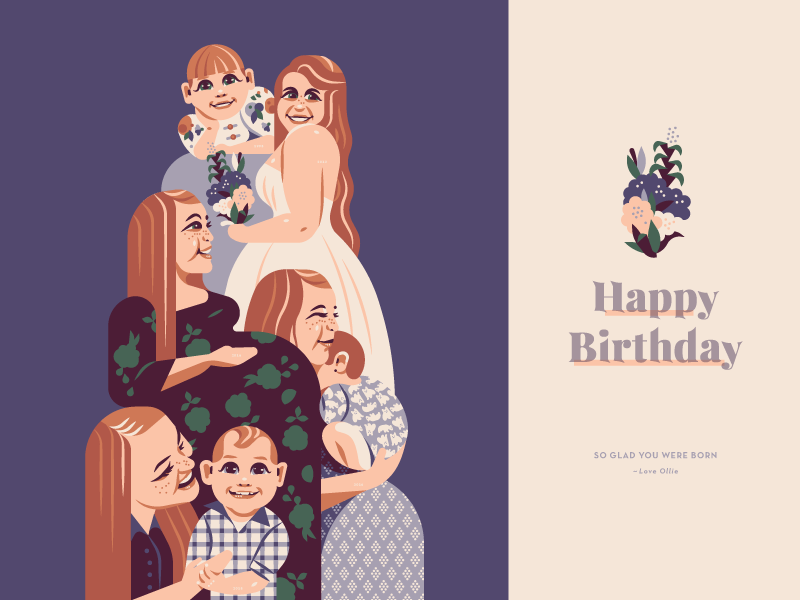
To Mom From Ollie
Made this card for my Son to give to his mom for her birthday. The Illustrations start with my wife as a baby and follow her journey to and with Oliver (my son). Marriage, pregnancy, birth and watching him grow to a strapping young 2-year-old. My highlight for this one was when @Mackenzie Graves asked our baby boy who was on the card he new each person she pointed at, "that my mommy, that my mommy too, that my mommy and ollie..." Of course he didn't know who was in mommies belly, haha. This was My first real project utilizing what I'm calling my "authentic style." My authentic style comes most naturally to me, is one that my childhood self would have liked, and uses little to no references to other designers work. There are other rules I've set for myself but it's also ever changing. I do want my style to be unique and impressive but I'm more concerned about being authentic. If that makes sense? Anyway, Hope you all had an amazing week!
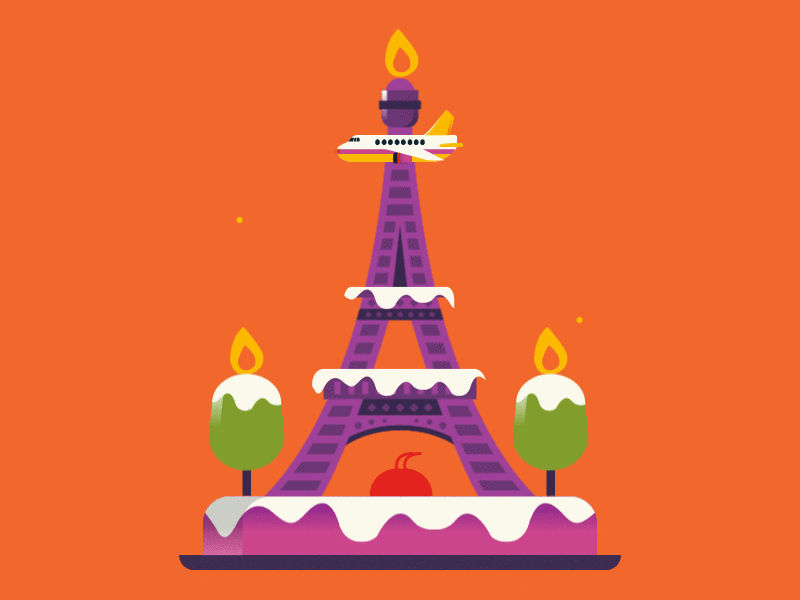
Birthday in Paris
Happy Birthday! This one I made it for personalize Birthday e-Card Jenius BTPN
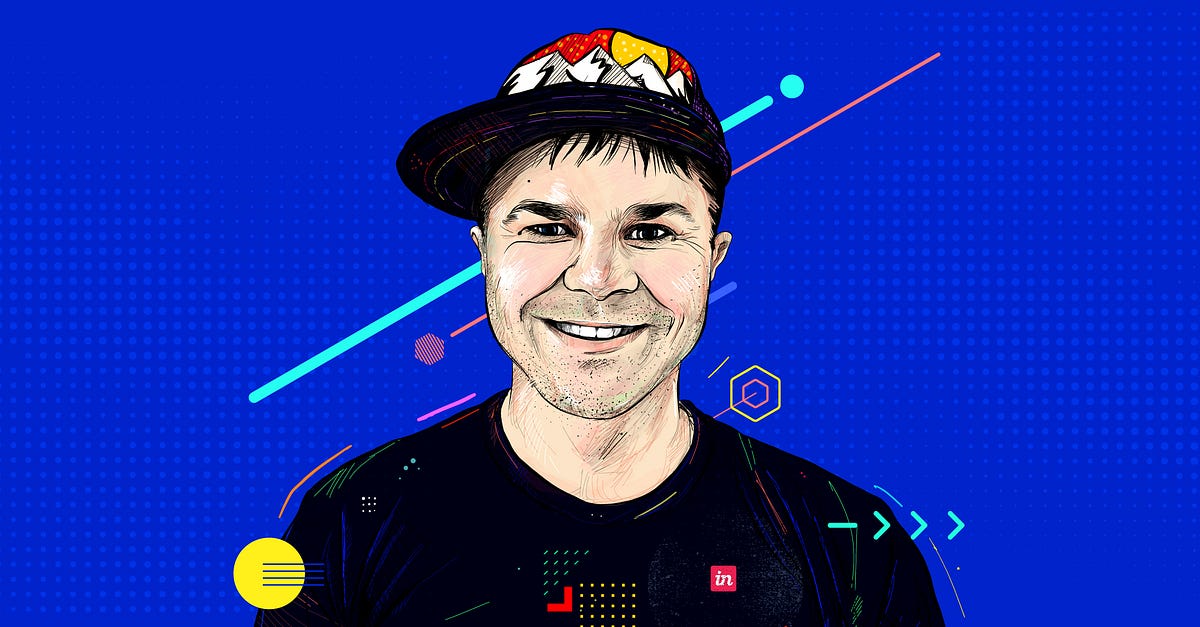
Abstracts — An Interview with Drew Bridewell
Senior Design Specialist & Design Educator at InVisionIllustration Melvin ThambiWelcome Drew to abstracts, How is your life in InVision?Exciting! Ever since I joined InVision, I have been on a wild, creative, challenging ride. I joined to help establish a new team at the company that would be full of Design Specialists.These individuals are previously lead/senior practitioners in the field who are passionate about design education, who had success in their previous roles at executing world-class design experiences, and overall a thirst to do something that would allow them to flex entirely different design muscles in their career.We recently brought on more team members and merged with the design practice team. We are now the “Design Transformation” team, led by Stephen Gates.I get to work, partner, and collaborate with some incredibly talented individuals. Chris Avore, Stephen Gates, Nabil Laoudji, Andrew Godfrey, Aarron Walter, Elijah Woolery, Leah Buley, and Emily Campbell to name a few.Life at InVision is not just about working with a talented internal team. It’s about getting to learn from and meet thousands of designers from around the world.I love learning about these teams most heartfelt pain points around processes, implementations, tooling, and cultures. These are challenges that InVision is working on every day. We have a desire to make every team in the world better designers and practitioners.Teams from around the world are building amazing experiences. It’s exhilarating to know and to be a part of this design revolution.Image courtesy : invisionapp.comCould you share your working experience at LinkedIn and talk about your initiative project ‘Practical UX Weekly’.I previously worked at LinkedIn before joining InVision. I was a part of the Lynda.com acquisition and also the Microsoft acquisition of Linkedin.It was such a fantastic experience to work at both of these companies. The people that made up Lynda.com and Linkedin were some of the most amazing people I’ve ever met. LinkedIn and Lynda are companies that understand growth mindsets. They encourage it, and we were trained as managers to be first class people managers.What I mean by that is our weekly 1:1 with our reports was all about career growth, setting them up for success, and being supportive. This manifested into meaningful relationships and removing unnecessary noise from the individual’s plate.I believe that this was a mindful practice that stemmed all the way from Jeff Weiner to the VPs, down to the design leadership and across the company.I dedicated my tenure at LinkedIn focused on Learning solutions like world-renown online learning platform Lynda.com and LinkedIn’s newer learning experience Linkedin Learning.Drew Bridewell and Andrew Rohman out on their InVision Studio demoI’ve always had a love to learn and develop myself. In doing so, I’ve become incredibly passionate about sharing content. At first, I would read article after article on Smashing Magazine and CSS tricks with Chris Coyier. I would share anything that added value to my life. I watched endless hours of Lynda.com video content to learn the tools and practices needed to be better. Then I gathered more and more experience in the field and started to develop a perspective that I wanted to share.That’s when Practical UX Weekly emerged. I realized there was so much content out there in the industry, but it was often hard for me to read an article then apply the skill that I had learned. I enjoy the video format, connecting with the teacher, and being able to put myself in place to apply the knowledge of what I learned immediately.This feeling led me to develop what is now Practical UX Weekly. A weekly series I produced and published on Lynda.com and LinkedIn Learning where I share the practices, perspectives, and methods of being a user experience designer. It’s important to me that these videos are short, concise, and engaging. Right now, there are 40 episodes, ranging from working with product management and engineers, to designing a responsive website. I also include some case studies from when I worked on the Lynda.com product.Season two of Practical UX Weekly is in the works.Cover card for Drew’s Thinking Design Systems episode on Practical UX WeeklyHow do you connect User Experience, Data & Storytelling?UX, Data, and Storytelling are all interconnected. You need a user experience to signify the context and to orient yourself to where you are at in space and time.You then need both qualitative and quantitative data to help inform and drive new hypothesises of solving problems and to validate the success of your newly designed solution.Storytelling comes on multiple fronts.The first one would be how you articulate and walk your product partners through the problem that your customer is facing. You could say that we talked to five customers and they all had the same problem, or you could pull five video clips of the customers stating the same thing. Then mix it with an introduction of the quantitative data points that were informing you in the first place that there was a problem.Thinking about storytelling at every stage of the product design lifecycle is not only going to help every member of your team understand why they are building a new feature, but it’s also going to help all parties empathize better with the customers existing experience.When you can get your team to empathize with the customer’s experience, it increases the sense of urgency and can increase the focus on implementing the right solution.Keep in mind, cognitive psychologist Jerome Bruner suggests content delivered as a story can be up to 22 times more memorable than just facts alone.I’ve read this research from others as well. So when I have a chance to jump into storytelling around user experience, I’m going to combine people, problems, data, research, along with setting the stage of walking through the solution from the first thought a customer may have, to the recurring use of that solution.To learn more about storytelling in UX check out my episode on “Storytelling in User Experience Design.”Drew at Google sharing his design education class on “Collaboration Inside InVision and Beyond”Invision is playing a major role in design education. Could you talk about some innovative projects from InVision?InVision has led the way when it comes to design education in my opinion. It’s difficult to go a week without InVision either publishing a new Inside Design at X company or a fresh new email from CEO Clark Valberg that has some of the most hilarious and meaningful CTA’s you’ve ever seen in a product.I still get asked if Clark from InVision is real when I go to a customer on sites, and the answer is always Yes. He is very much real, and an incredible human being.Then you have DesignBetter.co led by our Design Education team, a set of curated content consisting of ebooks, podcasts, workshops, and our newest section called Conversations.Our workshops hosted through DesignBetter.co teach anything from storytelling to building out design systems.As of late, the team has pioneered a new innovate project called the Design Genome Project. This is a combination of stories and data points, and practices that leading technology companies are applying to their day to day.I enjoy the Design Genome Project because it gives you an opportunity to look inside a company’s infrastructure without them giving away all their trade secrets. With this new project, we’re democratizing design knowledge that can help shed new perspectives for organizations across the world.Then you have my newly formed team of 2018. We’re called the Design Transformation Team. Our team consists of ex-head of designs, Design Leads, Design Managers, and Design Strategists.Our goal is to help elevate design practices, collaboration, and design maturity across the globe.What does this mean when it comes to working?We travel to companies to host workshops on design thinking.We’ll coach teams on getting started in the building, maintaining, and scaling of a design system.We’ll share best practices in working inside the InVision platform, and how to get the most out of it.We’ll help remove mental roadblocks for VPs, teams, and individuals who need a new way of looking at the problem.We’ll encourage looking at challenges as opportunities, and then we’ll prescribe ways for our partners to take an iterative approach to the solution.I think what InVision is doing around Design Education is a “people first” approach. It’s all about the people.That in itself is innovation, disruption, and of course, transformation.With InVision Studio, Design System Manager — DSM, InVision V7, the app marketplace, Inspect, Freehand, Boards, Craft, DesignBetter.co, Design Genome Project and the Design Transformation team, I believe this company is focusing on making a massive impact.Creativity marries with technological intelligence to create some outstanding results. How do you envision the influence of Artificial Intelligence in design?I like to think of AI in many positive ways. I believe that AI could help empower all product designers to build better products faster. I like to tie the idea and thought of AI back to things that we do day in and day out. Which could be all the tasks that are known as busy work.Think about the things we do as designers that require us to dig for details, search for artifacts, reorganize our layouts, share our files, find specific users to test, and the list goes on and on. I believe that AI mixed into our creative workflows could not only be incredibly resourceful, but it could help us solve problems faster. Imagine telling your computer the following:Hi InVision, open the sign-up flow I designed last year in September, the KPIs we were measuring, and the outcomes for the project. Can you also load our competitors sign up experience and map their existing workflow?This way you can see every step of the workflow so that you can find the strengths and weaknesses in the flow immediately. This is just one fundamental vision of how AI could empower us all to be better designers.It’s not about AI taking over and telling us what to do, it’s about us utilizing free internet data and parsing out the most meaningful information that you need to do your job better. To me this isn’t scary, this is revolutionary.Image courtesy : https://media.giphy.com/media/lpuctAFjDuZ6U/giphy.gifIt is essential as we scale new technological advancements that we are mindful of our actions and hold our society to high ethical and moral standards in the experiences we design.I have faith that we can do that even though there have been some movies and stories created to scare the living daylights out of us with regards to AI. I have to admit I still love watching them all. I’m a bit of a movie fanatic.InVision introduces a free design tool ‘Invision Studio’, How does it stand out from rest of the design tools?I first want to say that I’ve always been a lover of tools. I took my first Photoshop class in high school, and it immediately changed my life. The ability to create something you could imagine was a sense of magic for me. It was like I found my place in the world. It would challenge me, keep me inspired, and drove me to a place where I always wanted to learn more. Then it was Front Page, Illustrator, InDesign, Fireworks, then Sketch and now we’re in a world of Studio.InVision Studio has been a game changer for me with regards to how I think about design tools. I’m used to looking at a design tool to solve 1 or 2 specific use-cases. I would use Photoshop for high fidelity photo manipulation and graphic design. Then Illustrator for vector illustrations, workflow maps, and iconography.I’d use InDesign for print/pdf work that required better use of typography and grid systems. Fireworks was for everything screen design. This was one of my all-time favorite tools. I loved the pages, states, and layer model.They also were early to the component game. It made prototyping incredibly easy. Then there was Sketch. I would jump in between both Sketch and Fireworks for a period because Sketch started to blow past Fireworks from a stability perspective and I couldn’t deal with Fireworks crashing over and over.After now using Sketch for many years I have become very fond of it. It doesn’t crash, it allows for plugins and is pretty compelling.Tools need to be stable, reliable, fast and empowering. The path InVision Studio is on is incredibly exciting for me. It has taken what I love about all the screen based tools and built a foundation that can be scaled to become the world’s greatest design tool.https://medium.com/media/d800bb5137ddfeb839015455bdf46efb/hrefFrom the new developer platform for plugins, the integrated motion editor and timeline, to the in context prototyping, and simple contextual user interface. I believe the design, product, and engineering team driving this forward are genuinely incredible.It’s not just essential to have the vision of where it is going and what it can be, it’s about the team behind the experience. A lot of teams struggle because the operational side of building products is tough, painful and sometimes ruthless, but I’m feeling confident in the heart and soul behind Studio.That is what creators will connect with, and the community will be able to know that this product is going to evolve, get the proper attention, and will not be abandoned.The future needs InVision Studio. Studio’s heart and soul is being thoughtful about each of these pillars. Features will come fast, but the soul of this product is where it will win, and that’s something I believe in.Do you think design defines business? What are your tips for designers to focus on more on user experience and business thinking.User experience and business thinking need to go hand and hand.Full stop. All individuals on a team should understand the business goals, mission, vision, history, and of course the people that use the product. If you don’t know where to start for any of these, it can start by asking your manager, or senior leadership inside your organization.It’s important to understand each of the following topics because this information both qualitative (opinion based on experiences) and quantitative (metrics of usage) help inform you to create meaningful, actionable steps to solving business problems. Let’s get into practical examples.If you choose to skip the product or company’s history, you lose sight of what worked in the past, what failed, and what’s been tried. You learn about past solutions that might not have been shipped because the time in the market wasn’t the right one. Knowing the history enables you to see the evolution of the product which gives you a far better perspective.This allows for a far better strategic outlook in how you approach your thinking. Business goals are what keeps the company in business. If you don’t understand what those are then you’re disabling the possibility of innovative solutions.You’re also making it harder to help your product and engineering partners who are primarily depending on you. They rely on you to help execute, collaborate and facilitate the team’s ideas. We are the individuals who help bring our team’s hypotheses and solutions to life. If you’re not aware of what metrics help drive the business forward, then you are just a service. You’re not a participant or a contributor, you’re just more of a resource.I’ll hear from designers from time to time say that they want a seat at the table.They want to be a part of the decisions.This doesn’t come from you asking for permission. You have to KNOW that you are meant to be a driving force in the conversation. You must be included, and if you’re not, then you need to put yourself in a place where this is a basic expectation for you to do your job.Period.You need to know your company’s mission and vision because this is the WHY of your company.If you don’t know your why then again you are just a service to a more significant thing. When you get to understand the deep level of your companies mission statement and vision statement you start to truly manifest a combination of higher quality hypotheses that have higher chances of solving your company’s biggest problems.A designer’s role allows them to tap into so many different areas of a business, but where the magic comes in is when you get to interconnect all of those insights into a solution that can be tested, validated, and deployed.This is the magic of our role. The last topic is the people aspect. There is no excuse you could tell me that should stop you from talking to your customers every other week.Knowing your customers is what makes mediocre products graduate to world-class products. Why is that? It’s because you are building solutions that truly solve the problems that people are dealing with, and when you solve those basic problems, then you evolve to creating product enhancements, and that’s when true innovation occurs.I don’t think you should expect innovative solutions if your product is not functional. Once you have a beautiful, consistent, and functional user experience that’s when you start to open new doors of innovation and creativity.Sometimes you just need to build a great wheel. What you should be mindful of is where that wheel is going to live, how it can be improved, and how it could fit into other cars.Drew and part of the Design Transformation teamRemote working is the new norm. Could you share the benefits of following a remote working culture?I’ve worked at LinkedIn, Lynda.com, Crosscap, NICUSA, along with another handful of other companies. Every single company has had remote offices in multiple locations. Not one of these companies had a single space, a single entity, or a single place where everyone was co-located. What does this mean? This means that I’ve always been working remotely to a certain degree.When you’re in a position where this is your world, collaboration isn’t a choice. Your survival in the role depends on it. I also played sports my entire life before graduating from SCAD, and sports were no different. If you choose to skip a day and don’t try to be a good collaborator then you lose. Not only the game but possibly in your relationships.Drew working remotely with his grab and go gearWorking remotely is a personal choice that you must make based on your needs. It works great for me because at this stage of my career this is what I was in search of. I wanted to travel, see my son and wife more and work at a company where the entire organization embraced it. The icing on the cake is that our company is building tools and practices to help make this easier for everyone.If you’re making people’s lives better than you’re making more people and customers happy, which to me sounds like a magical transformational journey that is not only impacting InVision’s success but our entire global society.Drew with the other 500+ InVisioners singing happy birthday to his sonI also tend to think that because we have a 100% dispersed team across the globe, we are designing solutions that are uniquely diverse and inclusive. We have people from all over the world, working towards the same mission and vision, inspiring leaders and that is our secret sauce.How does a designer bring a change in the world by being a good design mentor?This one hits home for me. I feel like I’ve had some incredible managers and coworkers throughout my journey that have helped me at every stage of my career.Being a good design mentor is not just about passing along your expertise to another less experienced individual. It’s a way to help expedite a persons journey, and set them up for success. If you ever have an opportunity to do a mentorship I’d highly suggest you take it very seriously. I’d also suggest you make sure that you have mental capacity to be a people manager at the time.I bucket mentorships into four different quadrants. I look at how I’m going to support, empower, inspire, and coach the individual. If I don’t feel like I can do these four things then I’ll probably not take on the mentorship.Lets break them down.Support is what you need when you’re struggling on a topic and you need someone to talk to. You need this mentor to not judge you, not make fun of you, not try and tell you what you’re doing wrong. You want this behavior to be a moment to show your empathy. Empathy for another human being is critical to put yourself into another persons shoes. This helps you relate and truly show you can listen. This builds a bond that will last a lifetime and some of my best managers and mentors were exceptional at supporting me.Empower is what you do when you realize that your mentee is losing their confidence in what they do. Sometimes people can feel like they don’t have what it takes, or they feel like its hard to expand their skills. This is when a mentor can jump in and connect the situation into an actionable opportunity for the mentee. This could be the designer who often sees opportunities but never acts on them, and has to wait to be told to do it. This would be a great opportunity to help your mentee feel empowered that they have what it takes to do the job and you have faith in them to do it great. You’ll still be able to support them with the right expectations, but you want to enable them to do the work and make their own decisions. This way they can start building and exercising that skill.Inspire is a what you need when you least expect it. It’s normal to get stuck from time to time and if we have people around us who can help reboot our passions and excitement from time to time this can be a great trait of a good mentor. The other thing to think about is you don’t want to over do this. I like to balance out the amount of excite and inspirational conversations because I don’t want to be all inspiration and no action. I believe this is a balancing act and there needs to be a little time and space for skills to develop. You don’t have to rush.Coach is something that is probably the most important aspect of being a good mentor. If you’ve ever played in a team sport this is what will save you and your team in some of the most difficult situations. I’ve learned from playing sports that a good coach can be a game changer. They learn the tendencies of each and every player on the field. You know when you need to lift up a player, and you know when you need to tell a player to go for it. It’s situational, and a skill you learn to pick up over time. It’s similar to reading the room, reading the situation, and having 2–3 options to get you the solution.It’s essential to know that you were once in that mentee’s shoes. When you started you didn’t know what you know now. You were in a place of not knowing how something works or why it’s better to do something another way.Drew with John Maeda, and Andrew Godfrey at the end of Johns talk at IRL (InVIsion In Real LIfe)What matters most are the relationships you make. Those relationships matter more than you will ever know. You want to build bridges, not burn them. You want to help your peers and the people that want to learn and want to get better.The assistance I’m giving to product designers, engineers, product managers, marketing, and so on is having an impact on the future of design. It’s not just helping designers. We are all in this world together, making, building, fixing, and exploring things for the better.InVision’s different organizationsIt doesn’t have to be me vs you. We can help everyone become better. Then our next generation will live in a better designed world, where the society doesn’t accept mediocre experiences or mediocre ways of working together.So when it comes to mentorship remember the words you use have an impact. They can affect a person in ways you would’ve never imagined.If you want to learn more about a method for mentoring then check out the following article where I talk about a mentorship I did while I was at LinkedIn.https://www.linkedin.com/pulse/mentoring-designers-non-designers-beyond-drew-bridewell/Last question, what makes you happy now :)?I love this question on so many levels. Lots of things make me happy but if I were to prioritize my top 5 things that make me happy I would sum it up to the following items:Drew, Ehud Halberstam, and Adam Fry-Pierce in Seattle for an InVision Studio eventMaking my family happy makes me happyFeeling like I’m making a difference in this world in a way that aligns with my morals, values, and passionsExploring our world and meeting new peopleCreating and making thingsA nice warm cup of Equator coffee in the morningFollow DrewLinkedIn /Twitter / Medium / Instagram / FacebookGive your 50 claps 👏🏻 if you find this interview informative & engaging.Abstracts — A curated perspectives section with seasoned artists from the fields of Design, Art, Photography, Motion Graphics & Advertisement. Hear from the experienced and creative, as they share their ‘art’ process and sources of inspiration. An initiative from RapidGems Design Studio.Other AbstractsAbstracts — An Interview with MikeAbstracts — An Interview with Jonathan CourtneyAbstracts — An Interview with Zhenya RynzhukAbstracts — An Interview with Fernando ParraAbstracts — An Interview with Sergey AndronovAbstracts — An Interview with Bryan TalkishAbstracts — An Interview with Lorenzo BocchiAbstracts — An Interview with Roshan KurichyanilStay tuned for more interviews!Melvin Thambi works as a creative director at RapidValue Solutions & Founder of Emm&Enn Art Studio.Medium / Behance / Dribbble / Instagram / Twitter / LinkedIn / UnsplashAbstracts — An Interview with Drew Bridewell was originally published in Muzli - Design Inspiration on Medium, where people are continuing the conversation by highlighting and responding to this story.
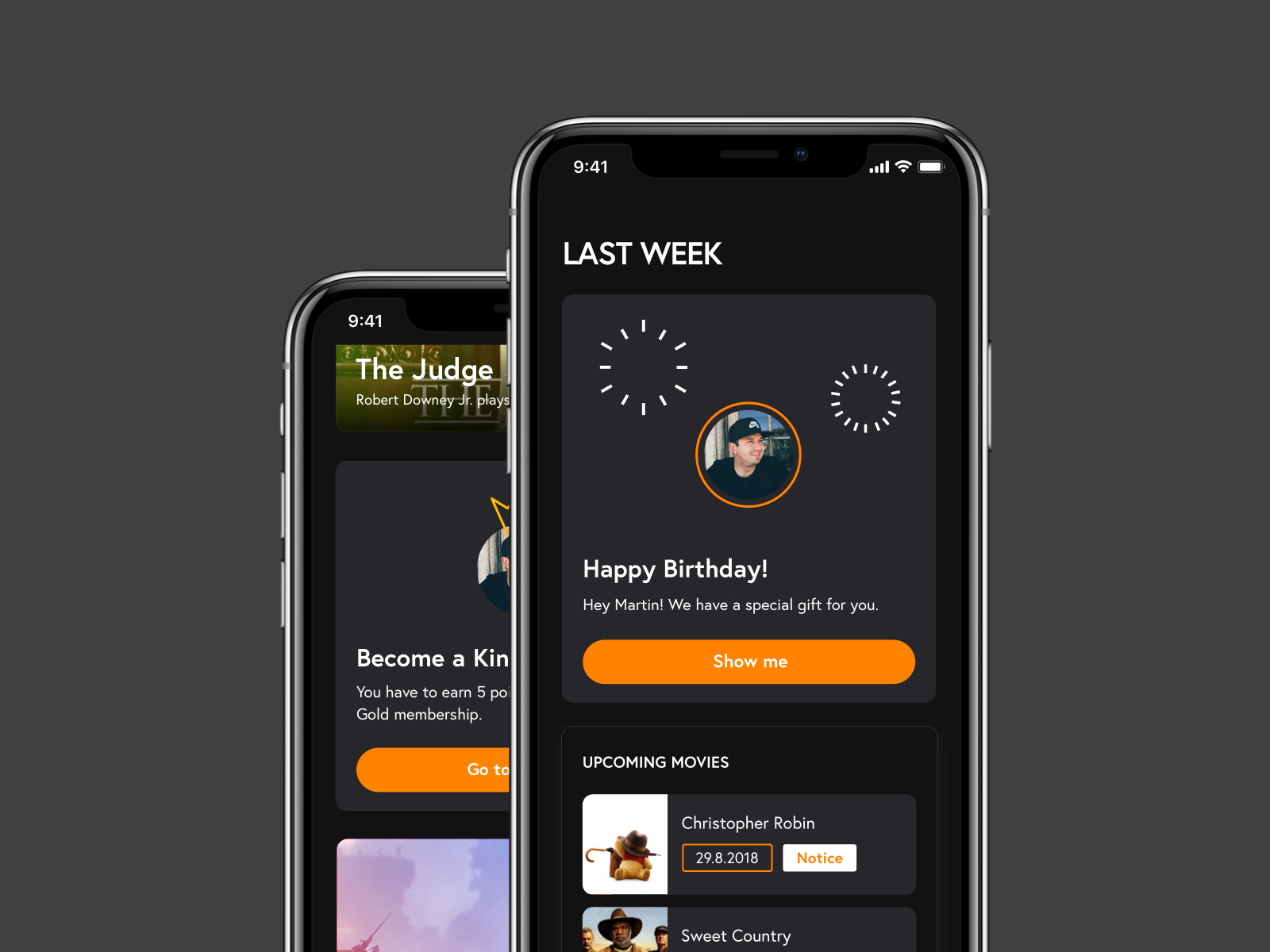
Cinema App – Personalized feed
The second type of posts is suited to your unique taste. Movies are recommended based on: – favorite movies/genres/people – seen movies Important days like your birthday, the significant anniversary of your club card and related content are here too – that means more discounts. View Case Study — Project
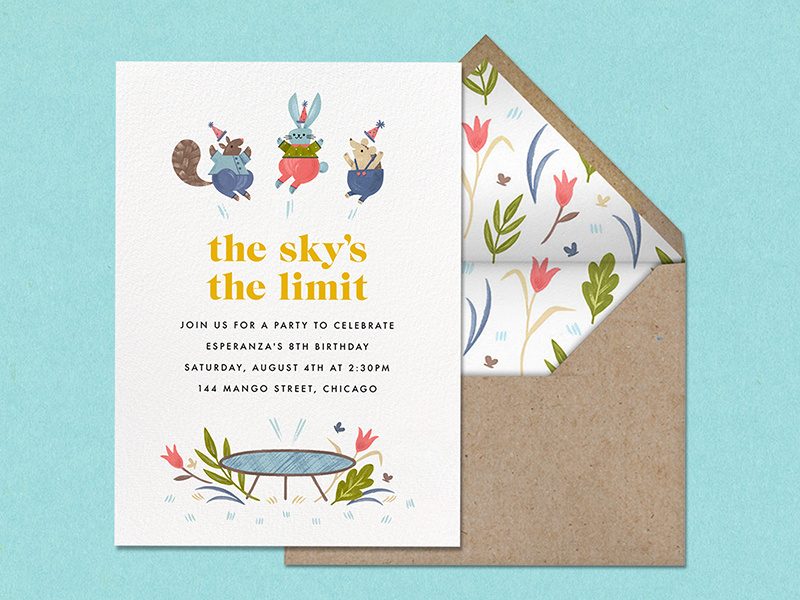
Little Tramps
Kid's birthday card for Paperless Post.
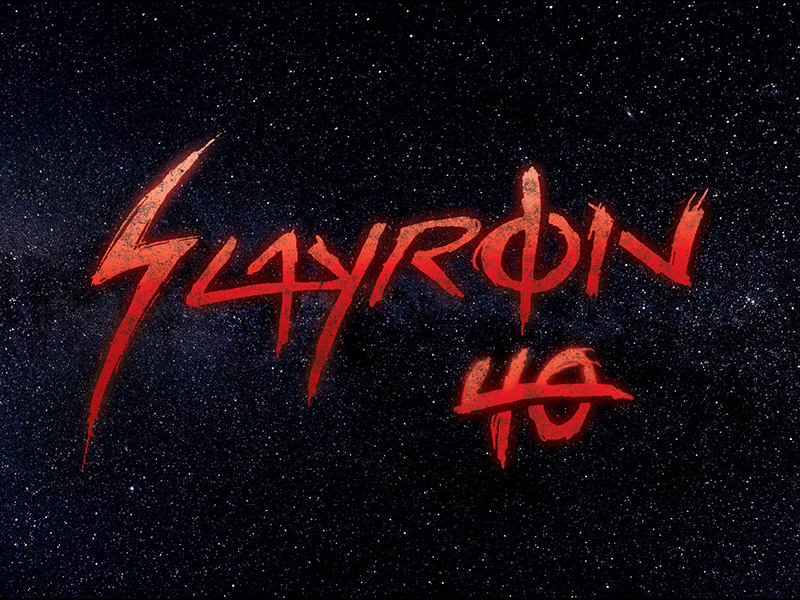
Slayron
Some hand-drawn type for a birthday card (WIP) for my brother in law who is turning 40. Slayron is a nickname. Hopefully that's obvious.
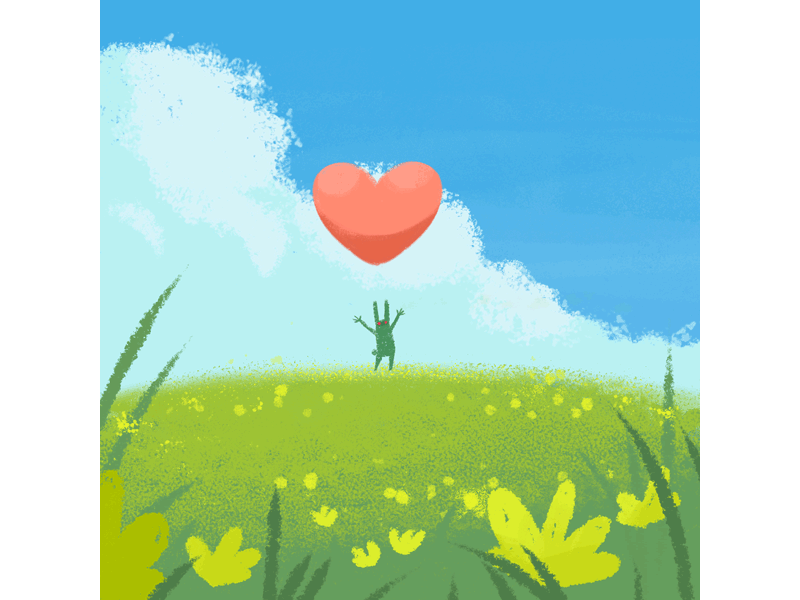
Last minute birthday card 8)

There is No Butter Pop Than You
quick illustration for a birthday card for my dad.

60
Custom birthday card

Inside of Pineapple Birthday Card

wish button
I drew a birthday card for my friend Mary

The "Holy Carp!" birthday card

Birthday Card
My son Crosby is turning one! Just having fun playing with colors and textures.

Birthday card Mick

HBD LIZ
Quick little type jammer I did for a collaborative birthday card my teammates and I put together yesterday.

Big Birthday Cake Bite 🦁
There will never be too big of a bite of Birthday Cake. 🦁Birthday Lion Greeting Card Design

1hb
First birthday illustration for greeting card and coloring page to be continued...

Levi9 birthday card
This is a preview of a birthday card we did for Levi9, a Dutch IT company providing nearshore software engineering services. Software engineers are in the target group, which is why we wanted to make the graphics pixelated and game-like. What do you think about the design?

Birthday Card

Happy Birthday - V02
Freepik Free Download! https://www.freepik.com/free-vector/birthday-card-template-with-cute-dog_3127758.htm

Blue Truck
Blue truck for a 1st birthday card template from recent work for Freepik.

First Birthday Card

First Birthday Card
Get access to thousands of freshly updated design inspiration pieces by adding Muzli to your browser.
Loved by 800k designers worldwide, Muzli is the leading go-to browser extension for creative professionals.